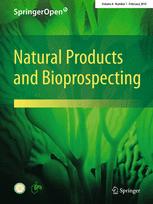|
|
The anti-obesity effects of EGCG in relation to oxidative stress and air-pollution in China
Collect
Simon CICHELLO, Pingsheng LIU, Markendya JOIS
Natural Products and Bioprospecting. 2013, 3 (6): 256-266.
DOI: 10.1007/s13659-013-0060-5
Modern China, similar to most developing nations, has seen a rise in the prevalence of both obesity and diesel exhaust based air pollution. The cause of obesity is multi-factorial encompassing diet, lifestyle and social factors. Also there has been a reduction in the consumption of fruit, vegetables, and traditional medicinal foods such as polyphenol containing green tea. Replacing these, are high fat and carbohydrate based processed foods which are quickly displacing these wholefoods in the diet. This review paper proposes evidence that a potential cause of obesity is also linked to environmental stress stimuli such as air pollutants, particularly diesel exhaust fumes (DEF) of > 2.5 μm particulate matter, and discusses a role for a green tea catechin (EGCG) for use as a dietary defence against diet and environmentally induced obesity. China is now at a critical point of a public health pandemic with rising air-borne pollution (via car exhaust fumes DEF), industry pollution such as heavy metals, and the benzene hydrocarbon based ‘2PM’ particulate matter, now accepted as a major environmental issue for public health. Relevant data published in MEDLINE since 1995 has been gathered to formulate the following review.
References |
Related Articles |
Metrics
|
|
|
Cipatrijugin G,a new trijugin-type limonoid bearing an uncommon γ-hydroxybutenolide unit from the aerial parts of Cipadessa cinerascens
Collect
Cheng-Shi JIANG, Yan LI, Zhen-Zhong WANG, Xiao-Yin HUANG, Wei XIAO, Yue-Wei GUO
Natural Products and Bioprospecting. 2013, 3 (6): 267-270.
DOI: 10.1007/s13659-013-0074-z
A new trijugin-type limonoid, cipatrijugin G (1), together with the related known cipatrijugin A (2), were isolated from the aerial parts of Cipadessa cinerascens. The structure of the new compound was determined by extensive analysis of its spectroscopic data and by comparison of its NMR data with those reported in the literature. Compound 1 showed cytotoxicity against tumor cell line A549 with an IC50 value of 9.78 μM. This is the first report of a trijugin-type limonoid bearing a γ-hydroxybutenolide unit, in comparison to the common furan unit as ring E.
References |
Related Articles |
Metrics
|
|
|
New amide alkaloids from Piper longum fruits
Collect
Jun YANG, Yao SU, Ji-Feng LUO, Wei GU, Hong-Mei NIU, Yan LI, Yue-Hu WANG, Chun-Lin LONG
Natural Products and Bioprospecting. 2013, 3 (6): 277-281.
DOI: 10.1007/s13659-013-0073-0
Three new amide alkaloids piperlongumamides A-C (1-3), together with 12 known ones (4-15), were isolated from the fruits of Piper longum. The structures of the new isolates were determined using spectroscopic data analyses. Cytotoxic activity of these amides against HL-60 (human leukemia), A-549 (human lung cancer), MCF-7 (human breast cancer), SMMC-7721 (human liver cancer) and SW480 (human rectal cancer) cell lines were evaluated. Piperchabamide B (11) exhibited weak inhibitory activity against HL-60 (IC50=21.32 μM), A-549 (IC50=23.82 μM) and MCF-7 (IC50=16.58 μM) cell lines.
References |
Related Articles |
Metrics
|
|
|
In vitro bone inducing effects of Lentinula edodes (shiitake) water extract on human osteoblastic cell cultures
Collect
Ashraf SAIF, Kristian WENDE, Ulrike LINDEQUIST
Natural Products and Bioprospecting. 2013, 3 (6): 282-287.
DOI: 10.1007/s13659-013-0070-3
The effect of Lentinula edodes water extract (LE) on two osteoblastic cell cultures (HOS 58 and Saos-2) was investigated to determine if this edible medicinal mushroom has osteoinductive properties. Activity of alkaline phosphatase and mineralization were used as indicators for the vitality and maturation of the bone cells. Cultivation of human osteosarcoma cells HOS 58 for five days in presence of a serial dilution of the aqueous extract of L. edodes (0.8 μg/mL-125 μg/mL) resulted in a significant elevation of alkaline phosphatase activity (ALP) of the cells in comparison to untreated cells. Saos-2 cells, incubated with LE (20 μg/mL) and β-glycerol phosphate (2 mM) for 21 days, displayed a 2 fold level of mineralization than cells cultured soley with the positive control, β-glycerophosphate. The obtained results clearly indicate the activity of LE as a bone inducing agent in vitro. Therefore, the shiitake mushroom (L. edodes) deserves attention as a supportive dietary treatment or nutraceutical in the case of diseases accompanied with bone disorder, such as osteoporosis, osteopenia, and late complication of diabetes.
References |
Related Articles |
Metrics
|
|

